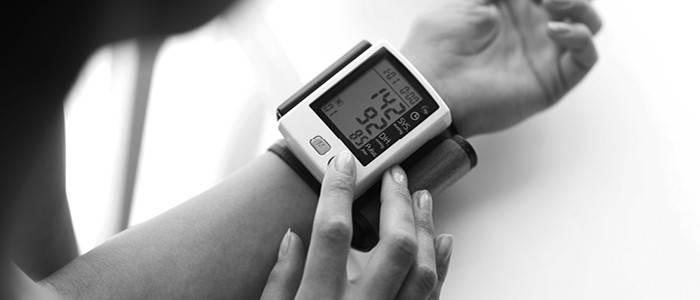- WHAT WE DO
Additional Services

- Industries

Case Study: Multilingual Retail Marketing
New AI Content Creation Solutions for a Sports and Apparel Giant

- RESOURCES

- WHO WE ARE

What We Do Home
Generative AI
- AI Translation Services
- Content Remix
AI Training
- Aurora AI Studio™
Machine Translation
- MT Tracker
Instant Interpreter
Smart Onboarding
Translation Service Models
Content Services
- Technical Writing
- Training & eLearning
- Financial Reports
- Digital Marketing
- SEO & Content Optimization
Translation Services
- Video Localization
- Software Localization
- Website Localization
- Translation for Regulated Companies
- Interpretation
- Instant Interpreter
- Live Events
- Language Quality Services
Testing Services
- Functional QA & Testing
- Compatibility Testing
- Interoperability Testing
- Performance Testing
- Accessibility Testing
- UX/CX Testing
Industries Home
Life Sciences Translations
- Pharmaceutical Translations
- Clinical Trial Translations
- Regulatory Translations
- Post-Approval Translations
- Corporate Pharma Translations
- Medical Device Language Services
- Validation and Clinical
- Regulatory Translations
- Post-Authorization Translations
- Corporate Medical Device Translations
Banking & Finance
Retail
Luxury
E-Commerce
Games
Automotive
Consumer Packaged Goods
Technology
Industrial Manufacturing
Legal Services
Travel & Hospitality
Insights
- Blog Posts
- Case Studies
- Whitepapers
- Solution Briefs
- Infographics
- eBooks
- Videos
Webinars
Lionbridge Knowledge Hubs
- Positive Patient Outcomes
- Modern Clinical Trial Solutions
- Patient Engagement
- AI Thought Leadership
SELECT LANGUAGE:
This is the fifth piece in our new Patient Engagement series, where Lionbridge Life Sciences experts discuss the history and current status of participants in clinical studies and patients in the healthcare system. Come back every week for more from our team and get in touch if you have ideas of your own to share.
Dr. Olalekan Lee Aiyegbusi is a Research Fellow and Deputy Director at the Centre for Patient-Reported Outcome Research (CPROR), University of Birmingham, UK. His primary research interests are focused on the management of chronic conditions; the optimisation of patient-reported outcome (PRO) assessment in clinical trials and routine clinical practice; patient education and patient and public involvement and engagement (PPIE) in research.
About the CPROR:
The Centre for Patient Reported Outcomes Research at the University of Birmingham (UK) is internationally recognised for its leading research into patient-reported outcomes (PROs). The CPROR aims to optimise the use of PROs in clinical trials and routine care, improve service delivery, enhance patient care and outcomes and ensure that the patient perspective is at the heart of health research and healthcare decision-making.
Lionbridge Life Sciences Clinical Solutions Director Nataliya Volohov spoke with Dr. Aiyegbusi recently about the growing impact of patient engagement and PROs in clinical research.
Nataliya: Dr. Aiyegbusi, welcome and thank you for taking the time to speak with me about patient engagement in the context of outcomes research. Patient engagement is an evolving concept with varied understandings and interpretations among patients, researchers, industry and other stakeholders.
Could you tell me what patient engagement means to you as a researcher?
Olalekan: Thanks for giving me the opportunity to discuss this important topic with you. You are right – patient engagement and involvement mean different things to different people.
For me, patient engagement in the context of outcomes research is the active and meaningful involvement of patients (and/or the public) throughout the research process, right from the planning and design stages to the dissemination of the findings. I emphasised meaningful, as I believe that patients should be enabled to make useful and tangible contributions when they are involved in outcomes research, and indeed any research.
"We recognise and accept that our patient partners may want to engage at different levels."
N: Patients differ in their willingness and ability to be involved. In your opinion, which elements are essential to the meaningful and effective patient engagement, however large or small its scope may be for the patient?
O: As you mentioned, the extent to which patients are willing and able to engage in research may differ due to a variety of reasons such as other commitments and the severity of their medical conditions. This is why research teams should have transparent communication with patients.
Discussions about levels of commitment and ways to help them input should be discussed at the very beginning. The provision of adequate information about what is expected of patients, the research aims and objectives is essential and could enhance patient engagement. At CPROR we recognise and accept that our patient partners may want to engage at different levels which may evolve depending on events in their private lives. The most important thing is to ensure that each patient is happy, comfortable and not overburdened by his or her level of engagement.
N: In what ways may PROs inform patient-centred research and care?
O: I believe PROs could play a central role in patient-centred research and care.
Let's consider their role in patient-centred research. PROs are used in clinical trials to provide evidence of the efficacy and/or the safety/tolerability of new drugs. The PRO data can further play an important role in the approval and regulation of such drugs.
The US Food and Drug Administration (FDA) is currently developing guidance to facilitate the incorporation of the patient voice in patient-focused drug development (PFDD) and regulatory decision-making. By providing assessments of patients' health status from their perspective, PROs help capture the patient voice.
Regarding patient-centred care, PROs have been recognised as useful in determining which aspects of care are important to patients. Such information can facilitate shared decision-making and be used to tailor the care provided to patients, thus ensuring that the outcomes of care are those actually valued by patients.

N: The CPROR and its international partners have developed the guidelines for inclusion of patient-reported outcomes in clinical trial protocols (the SPIRIT-PRO Extension).
What was the rationale behind the development of these guidelines, and how do they promote the idea of patient engagement and involvement?
O: That is a very good question. The SPIRIT guideline was developed to guide the development of clinical protocols and so improve the design and quality of clinical trials in 2013. Prior to the development of the SPIRIT-PRO Extension, the inclusion of PROs was inadequate, and the data often limited in its usefulness. The SPIRIT-PRO Extension was developed by CPROR in collaboration with its international partners to improve the manner in which PROs are incorporated into trial protocols and in turn how they are collected and analysed during trials. Implementation of the guideline could help ensure that patient perspectives are effectively captured during clinical trials and promote high quality data to inform patient-centred care.
N: The application of PRO measures in clinical trials may present various challenges from the scientific and logistical perspectives.
In your expert view, what influence may the trial participants’ diverse cultures, languages and literacy levels have on the trial design and PRO data collection strategy in a multinational clinical trial?
O: First of all it has been recognised that recruiting people from ethnic minority backgrounds for research and trials can be challenging due to a number of reasons. One of the most important being a mistrust of the intentions of researchers or trialists. Therefore, the recruitment of people from ethnic minority groups has to be approached thoughtfully.
There might be a need to provide translations of information sheets or employ translators during recruitment and data collection. Multinational clinical trials should provide relevant translated versions of PROs for patients who do not speak English as a first language.
Commonly used PROs have been translated into numerous languages. For example, the EuroQoL EQ-5D questionnaire has been translated into over 170 languages thus facilitating self-completion by patients who do not speak English. In a situation where the required version is not available, the trial team should consider undertaking a translation in conjunction with the questionnaire developers.

N: To be considered well-defined and reliable instruments, PRO measures need to undergo a rigorous development and validation process.
Could you describe the scope, benefits and challenges of patient involvement in this process?
O: Patients need to be involved in the entire process, not only as study participants but also as patient partners – after all PRO measures are patient focused tools. There should be initial patient and public involvement (PPI) consultations to discuss the clinical needs that warrant the development of a new PRO measure and what it may look like. Ideally, patients should be on the steering committee to oversee the project and contribute to the decision-making process. Patients should be consulted throughout the process to ensure that the final measure is acceptable and meets their needs. One of the challenges with involving patients in PRO development is helping them to understand the terminology used in PRO development and the validation process. It is crucial that they understand these sufficiently in order to contribute meaningfully. We regularly develop lay friendly glossaries, training and support for our patient partners.
N: With the development of technology, there has been a steady growth in the application of PRO measures on electronic devices, such as computer tablets and smartphones.
Based on your experiences, do you think electronic PROs offer better patient engagement and, if so, how?
O: With paper versions, patient responses often had to be manually collated before they are presented to the physician. This meant that physicians could not act on the information quickly. The recent technological advances have meant that more people have portable electronic devices, which may provide easier access to ePROs.
By allowing patients to use devices they are familiar with and potentially reducing the time required to complete PRO questionnaires the use of ePROs may encourage better patient engagement. The fact that medical teams are able to respond quicker to ePROs could also improve patient engagement as patients appreciate the benefits of completing ePROs more readily. The COVID-19 pandemic has also renewed interest in ePROs as it allows clinicians to monitor their patients remotely thereby reducing the risk of COVID-19 transmission.

"Uncomplicated and user-friendly"
N: Which factors may help to enhance patient experiences when using electronic PROs and thus increase patient engagement and retention in clinical trials?
O: Ideally, the ePRO system should be uncomplicated and user-friendly with instructions that are easy to read and understand. Efforts should be made to explain and demonstrate how to navigate the ePRO system to patients before the trials starts. This would ensure that patients adopt the system and continue to use it throughout the trial. Incorporating automatic electronic reminders into the system may also enhance completion rates.
Again, it is very important that patients are involved right from the start. Their opinions and suggestions should be obtained and incorporated into the design of ePRO systems/applications. This would ensure that the final product is acceptable to patients. Usability testing, where patients test run the ePRO prototype, is very important and should be conducted during the development process. Usability testing helps identify any issues with the user interface and the overall ePRO design. Whilst, ePRO developers may think that their product has all these attributes, there is no one better placed to assess ePRO systems like patients themselves.
N: In your opinion, what are the current barriers that hinder the maximisation of PRO trial findings?
O: There are a number of barriers that limit the usefulness of PRO trial findings. First, the selection of PROs without carefully considering the trial aims and how the PROs align with them means that the data collected would be of little use.
Inadequate analysis of PRO data is another important issue. Often PRO data from trials go unreported. A recent study by Kyte et al found that 38 percent of cancer trials collecting PROs on the UK portfolio failed to report PRO data. That translates to PRO data from 49,568 patients not reported and therefore not used effectively.
Poor presentation of PRO data may also hinder its use. If clinicians, policy makers, regulators and patients cannot understand the data properly then they would not be able to use the information or worse, make decisions based on wrong interpretations!
N: What role can patient engagement play in breaking these barriers?
O: I think patients could play an important role in the presentation and dissemination of PRO findings. Patient views can be obtained on how best to present PRO data to patients. They can also review PRO- related study materials for patients to ensure that they are written in lay language that is accessible to most patients. Patients can also actively disseminate trial findings via patient organisations, patient-focused publications and research conferences. Patients need to be empowered sufficiently in order to engage and play these roles.
"Empowerment involves treating patients as equal partners and providing appropriate training and support."
N: What tools may help empower patients to take an active role as partners in research?
O: I mentioned earlier that patients need to be empowered. I believe this empowerment involves treating patients as equal partners and providing appropriate training and support to patients, which could facilitate productive communications and collaborations. This way, patients gain enough confidence to take active roles in the planning and conduction of research as well as the dissemination of study findings.
In an increasingly remote and virtual trial space, clinical research is stretching across more and more geographies. Engaging patients from minority groups and additional countries means the language burden increases for all your trial needs, from consent forms to ePRO. Lionbridge is ready to support all your life sciences translation needs with experts in every language and topic.
Funding statement
O.L.A is supported by the National Institute of Health Research (NIHR) Birmingham Biomedical Research Centre (BRC); the NIHR Applied Research Centre (ARC), West Midlands, Birmingham; and the Midlands-Wales Advanced Therapies Treatment Centre (MW-ATTC). The views expressed in this article are those of the author and not necessarily those of the NIHR, NHS or the Department of Health and Social Care.
Competing Interests statement:
O.L.A declares personal fees from Gilead Sciences Ltd and GSK.
CPROR Twitter handle: @CPROR_UoB




